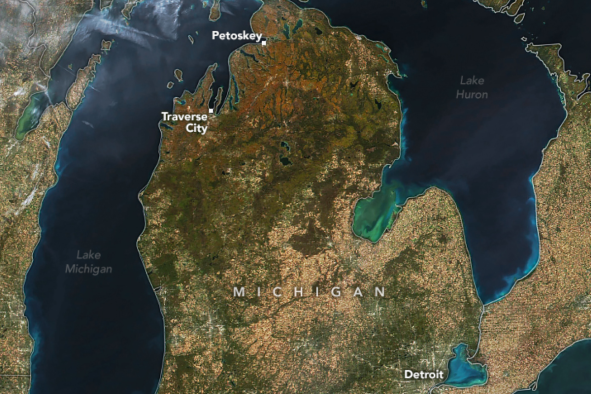Nearly 1,000 hurricane-affected U.S. households are set to receive $1,000 in direct cash payments as part of an artificial intelligence (AI)-driven aid program.
Nonprofit GiveDirectly has used AI developed by Google to quickly identify the most affected low-income areas in North Carolina and Florida.
The group says its approach is designed to remove much of the typical application burden and empower recipients to decide how to address their most urgent needs.
More than 37,000 traditional insurance claims have been rejected in Florida.
In turn, aid can be delivered "in as streamlined and dignified a way as possible," said Laura Keen, a senior program manager at the company.
Families highly impacted by Hurricane Helene and Hurricane Milton were invited to enroll through Propel – an app for managing SNAP and other benefits – on Tuesday. Funds are expected to deposited into debit accounts on Friday.
Intense weather conditions across Southern states have so far displaced thousands.
How Does AI-Driven Aid Work?
The organization's tech-heavy strategy relies on Google's SKAI tool and works in partnership with the United Nations' World Food Programme (WFP) to better respond to global emergencies.
It assesses pre- and post-storm aerial images to locate the hardest-hit areas.
By combining storm impact data with poverty maps, GiveDirectly targets families with the highest need, inviting them to take join its program.
This streamlined model allows the organization to avoid traditional in-kind donations like food and clothing, which, while valuable, don't always cover urgent needs like child care or temporary housing.
"There is an elegance to cash that allows individuals in these types of circumstances to resolve their unique needs, which are sure to be very different from the needs of their neighbors," Keen explained.
Additionally, fast access to funds helps people avoid predatory loans and credit card debt that often surge after a disaster.
Using Google's Tech to Map Disaster Impact
GiveDirectly began exploring cash-based disaster relief in the U.S. in 2017, providing funds to households impacted by Hurricanes Harvey and Maria.
That initial effort involved in-person enrollment and weeks-long processing.
In the present day, remote technology speeds up the timeline, enabling GiveDirectly to complete enrollment and payments in a matter of days.
Despite this, their cash-first approach does have limitations which need tweaks.
Using damaged building data to locate needs does not capture all low-income households affected by a storm. Targeting residents already enrolled in government benefits can exclude undocumented individuals and others who do not use public services.
"They don't have to find a bunch of documentation that proves their eligibility," Keen said, explaining that Google's AI tool identifies eligible households based on their location rather than paperwork requirements.
Research indicates that cash relief has a proven record of helping recipients recover.
A study from the Center for Guaranteed Income Research tracking 9,000 government aid recipients shows most of the funds go to essentials like food and transportation.
"There is no one who can budget better than a person in poverty," said Stacia West, the center's director.
FEMA's Potential Expansion of AI-Driven Relief
GiveDirectly's current campaign funds total $1.2 million, including a $300,000 contribution from the Conrad N. Hilton Foundation.
While this will help reach close to 1,000 families, additional funding would enable support for more households in the worst-hit states.
On a governmental level, the Federal Emergency Management Agency (FEMA) has also expanded its direct cash assistance program, increasing its Serious Needs Assistance payments to $770 in October.
However, FEMA only had 9 percent of staff available to assist people post-hurricanes.
But FEMA's program still requires households to apply, a process that has sometimes been slowed by misinformation and technical challenges, along with the unfamiliar stresses of having to rebuild your life post-disaster.
Chris Smith, a former FEMA official, said the agency could benefit from adapting new tech tools to improve efficiency, but that right now the government is subject to caution.
"There has to be ultimately an accountability of how any level of government is providing assistance to individuals," he said.
This article includes reporting from The Associated Press
Disclaimer: The copyright of this article belongs to the original author. Reposting this article is solely for the purpose of information dissemination and does not constitute any investment advice. If there is any infringement, please contact us immediately. We will make corrections or deletions as necessary. Thank you.



